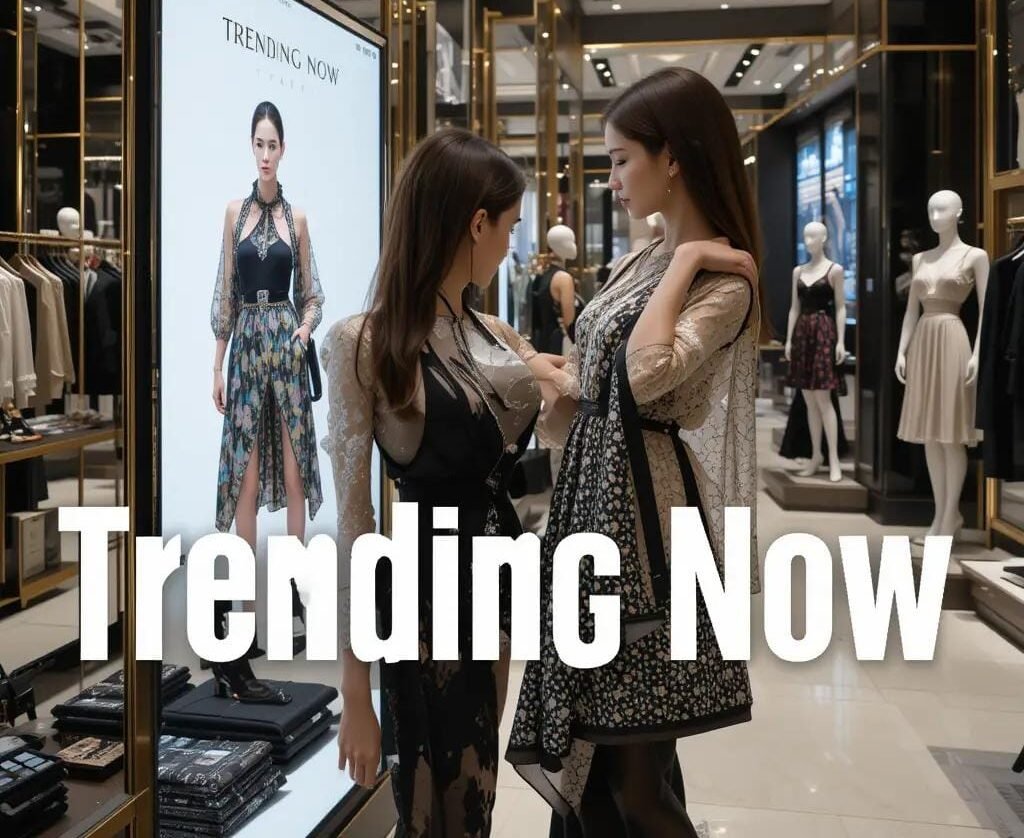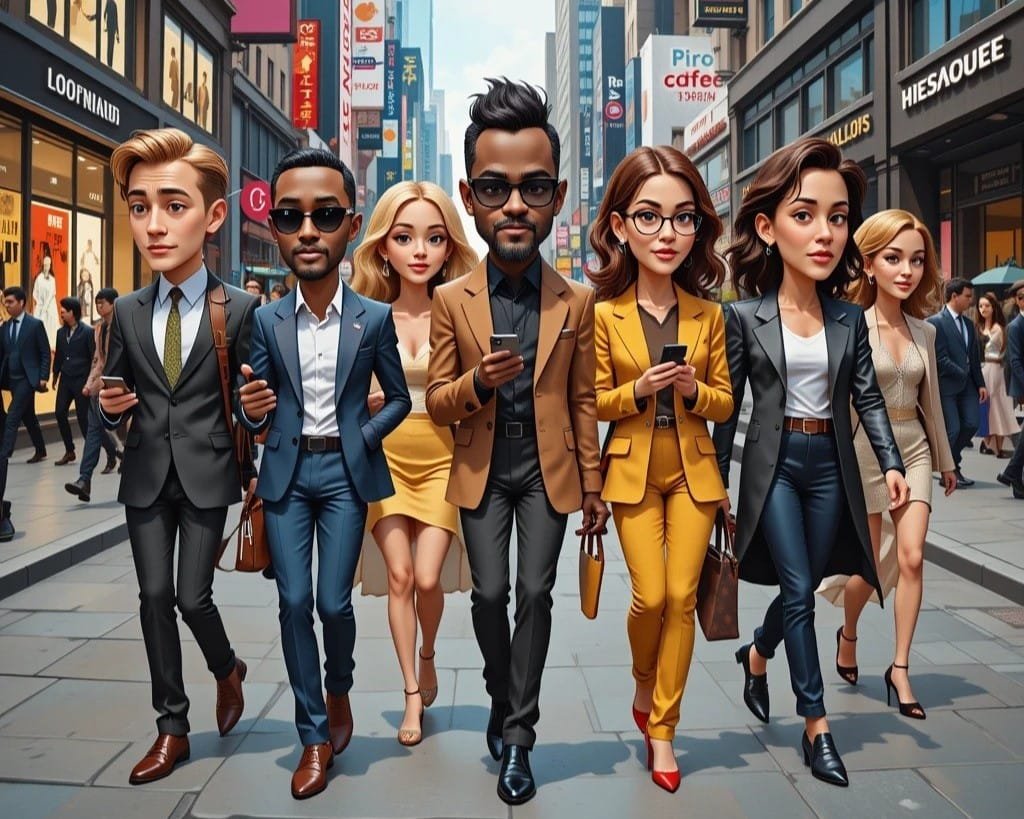The fashion industry is a dynamic and rapidly evolving ecosystem where trends dictate consumer preferences, influence global markets, drive economic growth, and shape the future of design, production, and retail. The ability to identify, analyze, and adapt to these trends is crucial for designers, brands, retailers, and consumers who wish to stay relevant and maintain a competitive edge. Fashion trends not only reflect cultural shifts and technological advancements but also serve as a catalyst for innovation, pushing boundaries in design, sustainability, and marketing strategies. This article delves into the latest fashion trends, their broader significance in the industry, and how businesses and individuals can strategically leverage them to remain at the forefront of an ever-changing market landscape.
What Are Fashion Trends?
Fashion trends refer to prevailing styles, colors, fabrics, and patterns that gain popularity over a specific period. These trends often cycle through eras, bringing back past styles with contemporary adaptations while also evolving in response to cultural shifts, technological advancements, and changing consumer demands. As trends influence fashion choices on a global scale, understanding their lifecycle and impact is essential for both businesses and consumers.
Categories of Fashion Trends
- Seasonal Trends
- These trends align with the changing seasons, influencing runway collections and consumer purchasing behaviors. Examples include floral prints for spring, lightweight linens for summer, and dark tones for autumn and winter. Seasonal trends also dictate layering techniques, fabric choices, and accessory selections that cater to climate changes and regional preferences.
- Sustainable Fashion Trends
- With growing awareness of environmental concerns, sustainable fashion is at the forefront of industry evolution. Brands are incorporating eco-friendly materials, ethical sourcing, and circular fashion concepts to reduce waste and promote longevity in clothing. The rise of second-hand markets, rental fashion services, and biodegradable textiles are also reshaping the sustainable fashion landscape.


- Technology-Driven Trends
- Innovations such as digital fashion, wearable technology, virtual try-ons, and AI-powered styling are redefining how consumers interact with fashion. Smart textiles, augmented reality shopping experiences, and 3D printing techniques are accelerating the industry’s digital transformation and enhancing consumer engagement.
- Cultural and Social Influence Trends
- Fashion is a reflection of society, with movements like gender-neutral clothing, modest fashion, and cultural inclusivity gaining significant momentum. Political activism, diversity representation, and social justice movements are increasingly shaping runway collections and brand narratives, influencing the way fashion is perceived and consumed.
Why Are Fashion Trends Important?
1. Influence on Consumer Behavior
Fashion trends shape shopping habits by creating a sense of urgency and desirability. Brands that capitalize on emerging trends successfully attract trend-conscious consumers, drive sales, and enhance brand loyalty. The increasing role of social media influencers and fashion bloggers accelerates trend adoption, making it crucial for brands to stay ahead of shifts in consumer preferences.
2. Market Competitiveness
Brands that align with contemporary trends maintain a competitive edge. Those that fail to adapt risk becoming outdated and losing market share to trend-driven competitors. In the age of fast fashion and digital retail, speed-to-market plays a vital role in capturing trend waves at the right time.

The stylish designer works on a trend-inspired design.
3. Driving Innovation
Trends inspire creativity and innovation in the industry. Designers push boundaries by experimenting with new fabrics, silhouettes, and production techniques, often setting the stage for revolutionary fashion statements. Emerging trends also facilitate cross-industry collaborations, such as fashion-tech integrations and sustainability-driven partnerships.
4. Cultural Significance
Fashion trends often mirror societal changes and values, allowing brands to connect with consumers on a deeper level. Aligning with cultural movements helps brands establish authenticity and foster community engagement, reinforcing their relevance in a rapidly evolving social landscape.
How to Identify Fashion Trends
1. Trend Forecasting
Fashion forecasters analyze industry data, consumer behavior, cultural shifts, and global events to predict emerging trends. Trend forecasting agencies, runway analysis, and retail insights provide valuable projections for future styles. AI-powered trend analysis tools are increasingly being used to predict shifts in consumer demand with greater accuracy.

2. Social Media and Influencers
Platforms like Instagram, TikTok, and Pinterest play a critical role in trend dissemination. Monitoring influencer activity, viral content, and consumer engagement patterns helps in spotting emerging trends. Real-time social listening tools provide deeper insights into consumer conversations and sentiment analysis.
3. Fashion Weeks and Runway Shows
Global fashion weeks in Paris, Milan, New York, and London set the stage for upcoming trends. Designers showcase innovative designs that trickle down into mainstream fashion through high-street adaptations. Fashion week coverage in digital formats, including livestreams and virtual showrooms, further extends trend reach to a global audience.
4. Consumer Data and Analytics
Analyzing purchasing patterns, online search behavior, and e-commerce performance provides insights into which trends are gaining traction. Tools such as Google Trends, WGSN, and fashion analytics platforms offer real-time trend data, helping brands make data-driven decisions.
How to Leverage Fashion Trends for Success
1. Adapting Product Lines
Fashion brands should integrate trends into their collections while maintaining brand authenticity. This can include incorporating trending color palettes, silhouettes, and sustainable materials, ensuring that offerings align with both consumer expectations and ethical considerations.
2. Trend-Driven Marketing Strategies
Incorporate fashion trends into marketing campaigns by using trending hashtags, collaborating with influencers, and leveraging social media engagement strategies. Limited-edition releases and capsule collections create excitement and exclusivity, driving consumer interest.
3. Sustainability Integration
Consumers are prioritizing ethical fashion. Brands can align with this trend by offering recycled materials, eco-friendly packaging, and transparent supply chain practices. Sustainable trend adoption fosters long-term brand credibility and loyalty.
4. Embracing Fashion Tech
Digital innovations like AI-powered personalization, virtual dressing rooms, and blockchain-enabled supply chain transparency can elevate customer experience and enhance brand credibility. Technology-driven fashion trends are redefining consumer interactions with brands and retail experiences.

Conclusion
Fashion trends serve as a driving force within the industry, shaping consumer behavior, sparking creative innovation, and influencing global market dynamics. As new trends emerge, they dictate purchasing decisions, redefine fashion standards, and push boundaries in design and retail. Understanding and strategically leveraging these trends enables brands to maintain their relevance, foster deep consumer engagement, and lead in an increasingly competitive and ever-evolving landscape. However, effectively capitalizing on trends requires a delicate balance—integrating emerging styles while preserving authenticity, prioritizing sustainability, and remaining culturally conscious. By embracing this approach, businesses can navigate industry shifts while maintaining brand identity and ethical responsibility. Whether you’re a designer crafting cutting-edge collections, a retailer curating trend-driven selections, or a fashion enthusiast staying ahead of style movements, adaptability and trend literacy will be key to long-term success and influence in the fashion world.




